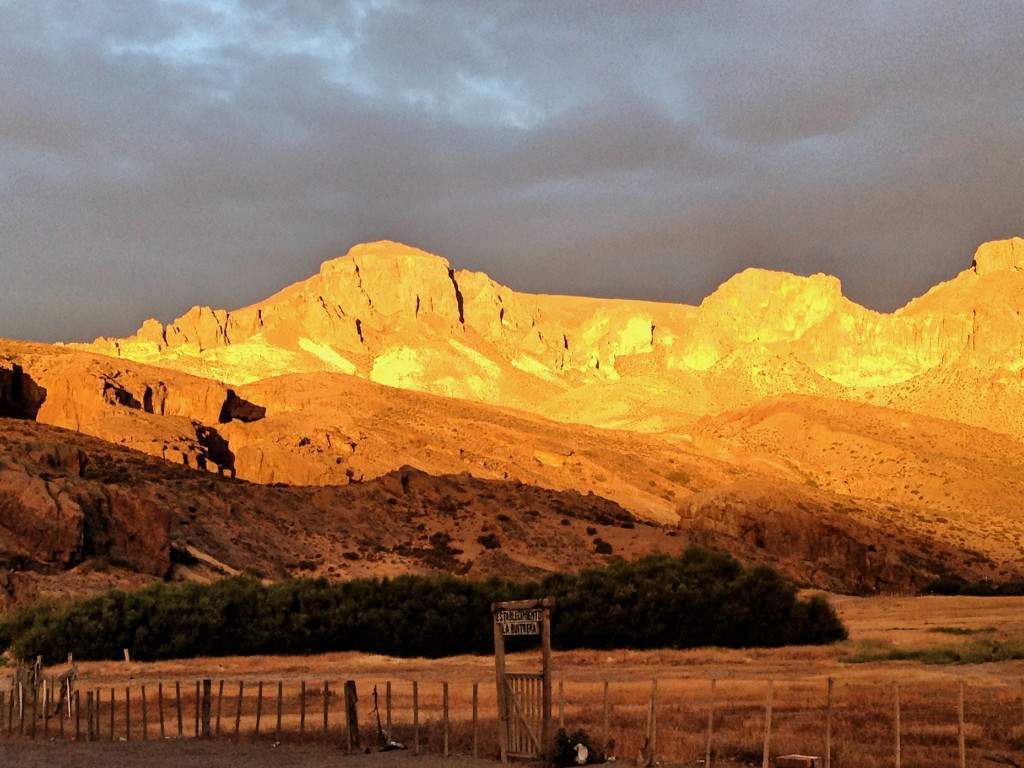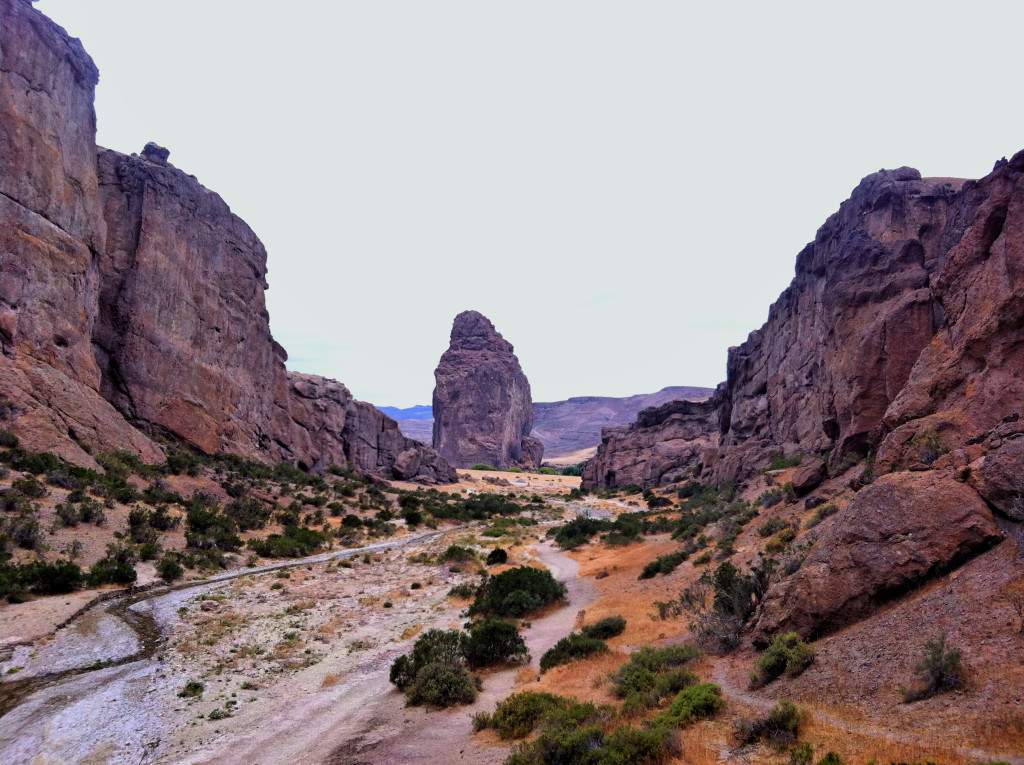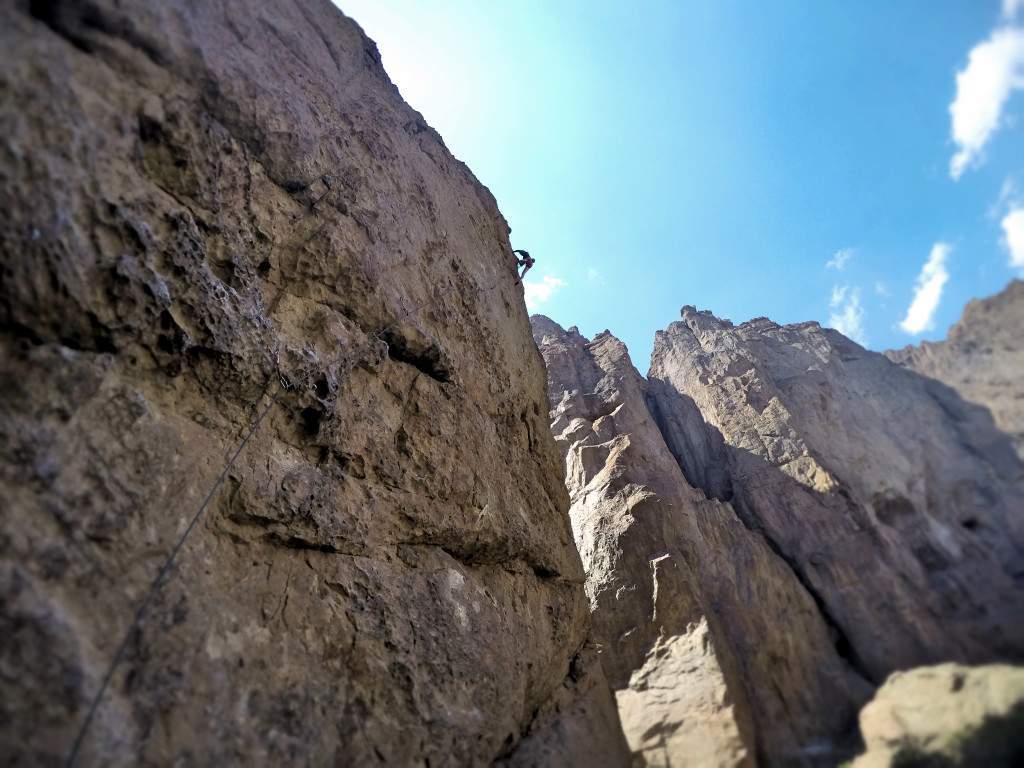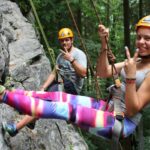Today’s post comes from guest contributor, Sarah Williams. Piedra Parada, which translates to “standing rock”, is an iconic rock feature that marks the entrance to a canyon once home to ancient people, now known for its beauty and endless climbing possibilities. It’s located in the Patagonian region of Argentina. Climbing here is a magical experience. It feels like you’ve been transported back in time to a more adventurous age, where there’s still so much to discover. Cell phones don’t work out here so you can forget about Internet access.

Piedra Parada is Spanish for “Standing Rock”
Piedra Parada Is The Best Climbing Destination
This place is isolated. And that makes it even more amazing. You can climb all day and only see a handful of other climbers—mostly Argentinians or Chileans. It became more widely recognized and more fully developed after the 2012 Petzl Roc Trip, which brought in hundreds of world-class climbers to establish world-class routes. But even after gaining all this attention, Piedra Parada remains remote, natural, and full of adventure waiting to be discovered.

Piedra Parada remains an isolated yet magical place
How to Get There
While Piedra Parada’s relative isolation makes it more adventurous and appealing, it also makes it a very difficult place to travel to. Book a flight to San Carlos de Bariloche (pronounced bear-ee-low-chay). There are no direct international flights to Bariloche, so prepare for a long day of travel. Once in Bariloche, you have a couple of options:
- Rent a car and go directly to Piedra Parada (note that it’s very difficult to get an automatic car, and if you’re lucky enough to find one it will be overpriced).
- Take a bus to Esquel, then take a second bus to Piedra Parada. Buses from Bariloche to Esquel run several times every day. The bus from Esquel to Piedra Parada only runs on Tuesday and Thursday mornings, so plan accordingly.
- Take a taxi. Prices vary depending on where you leave from. My climbing partner and I took a taxi from Esquel and it cost a total of $240 for the full trip there and back.

Where To Stay
There are two main options – camping at Senor Mario Moncado’s ranch or camping along the river. Along the river off of private property is free but has no facilities of any kind. The Moncado farm has outhouses, hot showers, a cooking area, and most importantly, a small market (read: concession stand) run by Senora Moncado.
We crush another amazing climbing destination, Refugio Frey.
They sell homemade bread, homemade jam, some fruits, meat from their cattle (called Lomo), cookies, beans, soap, camp stove fuel, crackers, etc. The store restocks only a couple of times per week, so they can run out of certain foods (read: cookies) fast. My advice: when cookies are available buy as many packages as you can carry. If you want something fresh like bread, tostadas, meat from the cattle, or eggs from the chickens, tell Senora Moncado a day or two in advance.
Where To Climb
Find a copy of the guidebook online as it is no longer in print. Senor Monacado has a copy of it at the store that you may be able to look at, and Club Andino (in Bariloche) may have copies for purchase. Many of the climbers at the crag don’t have a guidebook, so don’t expect to be able to borrow it from another climber.

There are 27 developed walls around the canyon, all with different styles of climbing. There’s some trad, some sport multi-pitch, and a wide variety of single-pitch sports ranging from 5.5 to 5.14.
Some of my favorite “don’t miss” climbs:
- El Sexto Elemento—this is a classic four-pitch climb, with pitches from 5.10b-5.11c. The climb is mostly vertical, technical climbing with a bit of slab. It has morning sun, so be sure to save to for later in the day.
- La Penca—this is a very tall “boulder” that is located right in the middle of the trail of the canyon—impossible to miss. There are two climbs, a 5.11d and 5.12a, on the face that are really fun, and the area is breathtakingly beautiful.
- La Calavera—this is the name of one of the last sectors of the canyon. It’s a can’t miss because of the incredibly unique rock features. I call it three-dimensional climbing; you’re constantly climbing in and out of these little ‘caves’ formed by the features (difficult to explain but amazing to see). Climbs in this area range from 5.11a-5.13d.

When To Go
North American winter is South American summer. I traveled there this past February and wore shorts and tank tops most afternoons, but a light jacket and pants in the mornings and while belaying. Overall the mid-day weather was fine for climbing, if not a little hot.
Where To Eat
Make sure to stock up on groceries before you arrive at Piedra Parada–there are no restaurants for hours! The Moncado ranch does have a small “market” where you can purchase some essentials, as I mentioned above.
Rest Day Activities
My friend and I used most of our rest day to hike around the canyon and scout out routes for the rest of the trip, as well as take time to set up some amazing pictures. If you’re not afraid of some icy cold water, you can swim in the river at the campground. After the quick dip, I brought out my sketchpad and watercolor pencils, set up camp in the canyon, and drew out the main Piedra Parada rock feature just as the sun was setting. Afterward, I would recommend hanging out at the ranch and enjoying an Argentinian Malbec.
Thanks, Sarah for sharing your climbing destination (and pictures) with us! Want to see and know more more Piedra Parada? Check out Sarah’s video of her trip below.
Climb on! ~Cate






